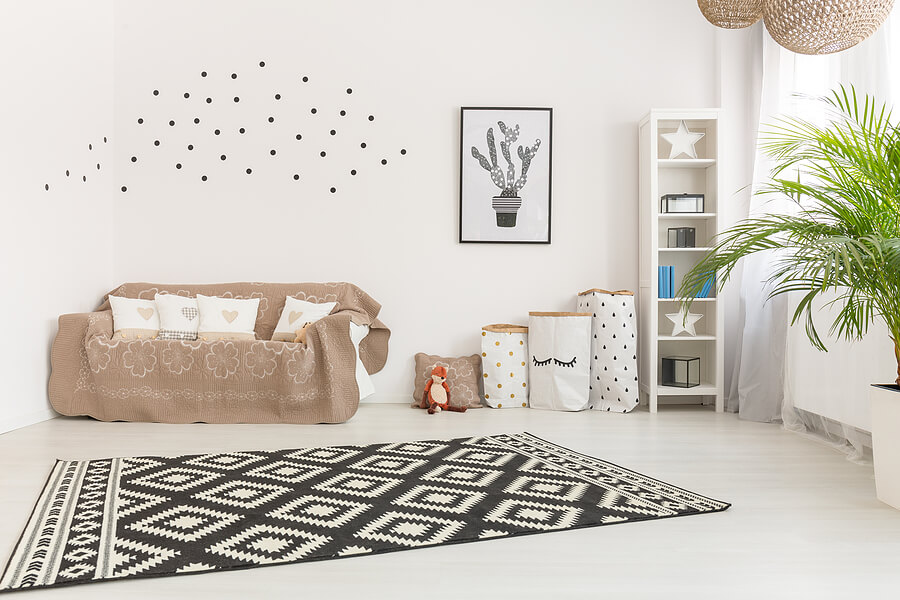Design doesn’t always need to be loud to be heard. Some of the most impactful spaces are the ones that speak softly, using refined finishes, layered textures and carefully chosen materials to create atmosphere. Whether you’re designing a minimalist retreat or simply want to elevate your everyday interiors, subtle design details can make all the difference.

One of the easiest ways to ground a space with understated elegance is through quality home flooring. A well-chosen surface with a realistic finish and durable construction offers both functionality and timeless appeal. From here, it’s all about building layers of detail that feel effortless, considered, and uniquely yours.
Start with a clean and cohesive foundation
The secret to creating impact with subtlety lies in consistency. Establishing a cohesive base sets the tone for the rest of the space, and this usually begins with surfaces, floors, walls and large furnishings. Stick to a restrained colour palette to keep things calm and cohesive. Think warm whites, soft greys or muted earth tones that allow other materials and textures to take centre stage.
Design doesn’t need to shout to make an impact. Thoughtful finishes, layered textures and quality materials can transform a space with quiet confidence. Laminate flooring, with its durable construction and timber-look finishes, offers a simple way to create a timeless foundation. From there, it’s about adding details that feel natural and genuinely you.
Focus on material quality and finish
When your design approach is subtle, the materials you choose need to work harder. High-quality finishes, matte paint, brushed metals, natural stone or tactile fabrics, bring richness and depth without relying on bold colours or patterns.
Pay attention to how light interacts with each finish. Matte or honed surfaces soften light and create a soothing atmosphere, while satin and polished elements add quiet sophistication. Even in a mostly neutral space, variation in finish can introduce a sense of rhythm and quiet luxury.
Let architectural details do the talking
Small architectural moments, like a curved wall edge, recessed shelving or minimalist cornices, can add personality without disrupting the flow of the room. These subtle shifts in form catch the eye and elevate the design.
Skirting boards, door trims, and window reveals can also enhance a room when done thoughtfully. For instance, painting them in the same colour as the wall or in a soft contrast shade can make the room feel layered but not overworked.
These elements often go unnoticed at first glance but play a powerful role in how a room is experienced. They help guide the eye and create moments of visual interest without demanding attention.
Play with tone-on-tone texture
If you’re working within a soft or monochromatic palette, texture becomes your best friend. Mixing similar tones with different tactile qualities is a designer trick that adds depth and sophistication to a room.
Consider layering a wool throw over a linen lounge, adding sheer curtains beside smooth walls, or placing a textured rug over laminate flooring to create contrast underfoot. Even subtle material choices, like raw timber, hand-thrown ceramics or matte tile, can create impact when layered carefully.
This tone-on-tone approach allows you to keep things restrained while still engaging the senses. The result feels curated, calm and visually rich.
Highlight edges and junctions
Often overlooked, the junctions where materials meet, such as where the floor meets the wall or tile transitions to timber, are opportunities for refinement. Paying attention to these small details creates a feeling of polish throughout the space.
Use metal trim to create crisp lines between surfaces or opt for shadow gaps to introduce a sleek, architectural look. Even simple transitions, like a well-cut skirting board or neatly finished threshold, can quietly elevate the room.
These details may be subtle, but collectively they signal care, craftsmanship and intentionality.
Incorporate hidden function
Subtle design isn’t just about aesthetics, it’s also about function that works in the background. Clever storage solutions, concealed lighting, or integrated appliances are all ways to maintain clean lines without sacrificing usability.
Recessed LED strips under cabinetry, for example, can softly illuminate benchtops or hallway walkways. Built-in joinery with touch-latch doors keeps clutter at bay and avoids the need for visible handles, preserving the room’s simplicity.
When form and function are seamlessly blended, the result is a space that feels calm, capable and beautifully resolved.
Use lighting as a sculptural element
Lighting can either be a bold statement or an ambient backdrop. In subtle design, it’s often the latter. But subtle doesn’t mean boring. Choose lighting fixtures that add form, texture or architectural interest, even when they’re switched off.
Wall sconces, pendant lights and even floor lamps with curved shapes or textural finishes can provide gentle focal points. Positioning is also key: up lighting a wall can create a soft glow, while downlighting can bring warmth to surfaces like timber-look laminate flooring or stone benchtops.
When thoughtfully placed, lighting becomes a quiet sculptural feature that enhances mood and brings subtle layers of beauty into the space.
Add personality through restraint
Finally, bring personality into the room not through clutter or statement pieces, but through thoughtful restraint. A single piece of art, a sculptural vase or a well-chosen chair in a unique finish can have far more impact than multiple accessories competing for attention.
Think about emotional connections too. What objects bring you calm, joy or inspiration? Display them where they’ll be appreciated, allowing the rest of the space to support rather than distract from them.
Subtle design isn’t about removing personality; it’s about refining it.
Subtle design is powerful design
Subtle doesn’t mean simple or unfinished. It’s a refined, elevated way of designing that relies on detail, quality and thoughtfulness to create lasting impact. From tone-on-tone textures and seamless finishes to softly layered lighting and quiet architectural flourishes, these gentle elements add up to something that feels truly special.
When you embrace subtle design, you make space for the things that matter most: comfort, clarity, and a feeling of home that’s as enduring as it is elegant.


